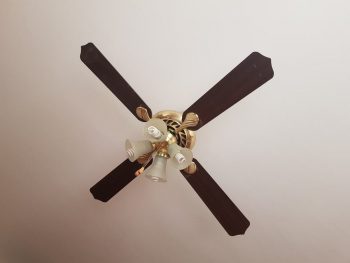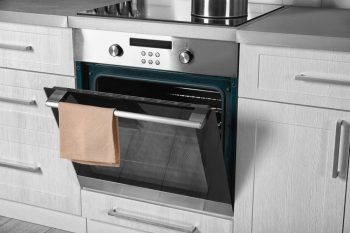
An air conditioning (AC) system is a crucial part of our homes, especially during the hot summer months. The AC blower plays a significant role in maintaining indoor comfort by distributing cooled air throughout your home. However, like any other mechanical component, it can encounter issues that can affect its performance. In this comprehensive guide, we will discuss how to fix an AC blower, common issues, and DIY maintenance tips to keep your AC blower running efficiently.
To fix an AC blower, start by identifying the problem – signs can include weak or no airflow, strange sounds, overheating, or a frequently tripping circuit breaker. Gather the necessary tools such as a screwdriver, adjustable wrench, multimeter, and more. Troubleshoot by checking for demand, inspecting mechanical and electrical components, testing the blower motor windings, and resetting the blower motor. If the blower still doesn’t function, it may need to be repaired or replaced. Always remember to prioritize safety and consider hiring a professional if unsure.
Common AC Blower Issues
AC blower issues can manifest in a variety of ways, including weak airflow from the vents, no airflow at all, unusually high energy bills, strange sounds, and overheating. These issues can be caused by a range of factors such as a faulty capacitor, dirty blower fan, old motor, malfunctioning thermostat, faulty relay, or bad wiring.
For instance, a bad capacitor on a PSC blower motor can prevent the blower from turning on. Similarly, dirt and debris can accumulate on the blower fan, reducing its efficiency and causing unpleasant odors. An aging motor can also overheat, causing further damage to the motor or its surrounding components.
Identifying Problems with an AC Blower
Before diving into the repair process, it’s important to identify the problems with your AC blower. Here are some signs to look out for:
- Weak or no airflow from vents: A weak or non-existent airflow might indicate a faulty blower motor.
- Strange sounds: Unusual noises such as rattling or screeching could point to loose or broken parts or a motor belt that needs replacement.
- Overheating: An AC blower motor with problems may overheat due to built-up dirt and grime or when it’s old and worn out.
- Frequently tripping circuit breaker: If your AC system’s circuit breaker trips frequently, it could be a sign of a malfunctioning blower motor.
Tools Required for Fixing an AC Blower
Before starting any repair work, ensure you have the right tools on hand. These include safety glasses and gloves, a screwdriver, a socket or ratchet set, an adjustable wrench, a multimeter, a voltage detector, insulated screwdrivers, needle-nose pliers, a nut driver, and optionally, a drill or driver and a flashlight.
Troubleshooting a Faulty AC Blower
Once you’ve identified the problem and gathered the necessary tools, it’s time to troubleshoot the AC blower:
- Check for demand: Ensure the blower is supposed to be operating. If there’s demand and the blower isn’t working, it could be due to a mechanical or electrical failure.
- Inspect mechanical components: Test the bearings and ensure the blower wheel spins freely. Issues with the bearings or the wheel could lead to mechanical failure.
- Verify electrical components: Check if the circuit board is applying the correct voltage to the blower. If the voltage is correct, test the microfarads on the capacitor to see if there’s a short or open on the capacitor.
- Check the blower motor windings: Test the blower motor windings with a digital multimeter while the power is off to the unit.
- Inspect the blower motor bearings: With the power off, reach in and grab the center of the blower motor. Spin it to see how easily it turns and wiggle it to check for any looseness.
- Examine the wires in the furnace: Inspect the wiring for any visible damage or loose connections.
- Check the thermostat: Ensure the thermostat is set and working correctly.
- Reset the blower motor: Locate the reset button, usually red and located on the backside of the motor. If the reset button has popped, push it back in to reset the circuit breaker inside the blower.
Safe Repair or Replacement of the AC Blower
If the blower is still not functioning after following these steps, it’s time to repair or replace the unit. Follow these steps:
- Turn off the power: Before starting any work, turn off the power to the AC unit.
- Remove the access panel: Take off the access panel to expose the blower motor and fan assembly.
- Inspect the blower motor and fan: Check for any visible damage.
- Remove the blower motor: If the motor needs to be replaced, disconnect the electrical wires and remove any mounting brackets or screws holding the motor in place.
- Clean or replace the blower fan: If the fan is dirty, clean it using a soft-bristle brush or compressed air. If it’s damaged, consider replacing it.
- Install the new blower motor: Secure the new motor in place using the mounting brackets or screws, and reconnect the electrical wires.
- Replace the capacitor: It’s recommended to replace the capacitor when replacing the blower motor to ensure optimal performance.
- Reassemble the unit: Put the access panel back in place and secure it with screws or clips.
- Turn the power back on: Flip the breaker switch or turn on the power switch to restore power to the AC unit.
Remember to always prioritize safety and consider hiring a professional if you are unsure about any aspect of the repair process.
Precautions While Fixing an AC Blower
While working on an AC blower, you need to take necessary precautions to ensure safety. Always wear proper protective equipment, turn off the power before starting any work, be cautious around electrical components, handle refrigerants carefully, use proper lifting techniques, inspect the blower motor, and seek professional help if needed.
DIY Tips for Maintaining the AC Blower
Regular maintenance of your AC blower can prevent future issues. Some simple DIY tips include cleaning the blower wheel, cleaning the evaporator coil and drain, checking and cleaning the condenser unit fan, changing or cleaning air filters, inspecting ducts for blockage, and keeping the surrounding area clean.
In conclusion, understanding how to fix an AC blower can save you time and money. However, if the problem persists or the repair process seems too complex, it’s best to seek professional help. Regular maintenance can also go a long way in preventing issues and ensuring your AC system runs efficiently.
Frequently Asked Questions
What is a capacitor and why is it important in an AC blower?
The capacitor is a critical component of an AC blower. It’s a small device that stores energy and releases it to start the motor or keep it running. A faulty capacitor can prevent the blower from turning on or operating efficiently.
How often should I clean the AC blower?
It’s recommended to clean your AC blower at least once a year, ideally before the summer season begins. Regular cleaning can prevent dust and debris from building up and affecting the blower’s performance.
How can I tell if my AC blower motor needs to be replaced?
Signs that your AC blower motor may need to be replaced include weak or no airflow from the vents, unusual noises, frequent circuit breaker trips, or overheating. If you’re experiencing these issues and troubleshooting doesn’t solve the problem, it might be time to replace the motor.
What could cause the AC blower to overheat?
Overheating in an AC blower can be caused by a buildup of dirt and grime, a worn-out motor, or a failing capacitor. Regular cleaning and maintenance can help prevent overheating.
What is the role of a thermostat in an AC system?
The thermostat is a device that regulates the temperature in your home by controlling the operation of your AC system. It signals the AC blower to turn on or off based on your set temperature. A malfunctioning thermostat can affect the operation of your AC blower.












